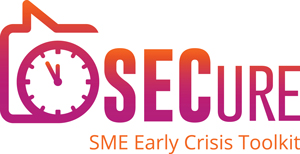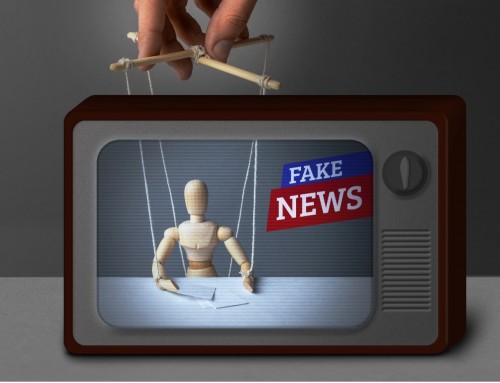Even discounts that are slightly higher than the calculated discounts lead to significant drops in profit. Therefore, it is always worthwhile to fight to maintain prices or at least to grant the lowest possible discounts.
1. the risks of price discounts
There are many reasons for discounts: competition is increasing, customers are better informed about prices (Internet) and there is also a general trend towards haggling over prices. It is often tempting for you to give in quickly, especially to customers who are pushing hard, in order to at least close a deal and generate sales.
However, this approach carries significant risks:
- Sales do not equal profits, and even granting slightly higher than calculated discounts can cause you to slip into the red.
- Customers to whom you have once granted a disproportionately high discount will not be fobbed off with a small discount on their next purchase.
- The regular granting of discounts can jeopardize the business model of entire industries if word gets out that all sellers are constantly undercutting each other. For example, when buying a car today, hardly anyone pays the required list price.
Although it will not always be possible to enforce your own price, you can successfully counter this development with a few measures.
2. successfully prepare and implement price negotiations
The tips in the following checklists show you how to avoid price reductions as far as possible. The checklists serve as an incentive and motivation to deal more intensively with sales negotiations.
Checklist: Prepare for price negotiations
- The most important thing: Do you identify with your product, the offer and the company, and do you radiate self-confidence during discussions? Only then will you have high success rates.
- Familiarize yourself in detail with all products, e.g. performance characteristics, strengths and weaknesses. Do the same with competitors’ products: Find out about their items, prices and discounting behavior. Especially important: What are the differentiating features?
- Try to find out more about the customer in advance of negotiations, e.g. about wishes, needs, hobbies, character, previous conditions.
- What key benefits do customers expect: e.g. convenience, safety, service, technical performance, time savings, prestige (if necessary, ask during the conversation or draw on experience from previous sales)?
- If prices are not stated: What price do you want to enter into negotiations with? If necessary, above the calculated value to get more negotiating leeway?
- Where is your absolute pain threshold (minimum: variable costs – here you achieve neither DB nor profit)?
- Determine in advance what you will do if the pain threshold is undershot, e.g. cancel or postpone.
- What alternatives can you offer customers in lieu of a discount, e.g., top-up, longer warranty, free inspection?
- Be prepared for possible objections.
Checklist: Conduct price negotiations
- Open the conversation in a friendly manner, greeting the customer by name if possible.
- Create a good atmosphere: for example, go into a quiet room and offer the customer a drink. Make a little small talk, inquire about the customer’s health or family, for example.
- Then ask the customer what specific requests they have today and how you can help them.
- Try not to focus on the price at the beginning. Instead, always focus on the benefits of the product first. Be as specific as possible, e.g. “If you use this tool, you will achieve a time saving of at least 10% compared to conventional tools. So you can make and sell 1-2 more items every day.” Whether a product seems too expensive or inexpensive depends on whether the customer recognizes the benefit!
- If the customer insists on an early mention of the price, you can often solve the problem as follows: “I’ll get to the price right away. Let me just conclude by outlining the benefits of…”. This gives you a chance to fully present the product to the customer before naming the price.
- With business customers: Here, there are often different benefit expectations. General managers are usually interested in what the product “does,” such as saving time, technicians want to know how it works, and a buyer is interested in delivery flexibility, among other things.
- If your offer does not meet the customer’s needs at first glance, you should work with the customer to find a solution that is still possible, e.g., “You want (customer request), what can I do for you here?” Or, “Which product would be most likely to help you?”
- Upon successful completion, summarize all key points again in writing to eliminate misunderstandings and any ambiguities. Have the customer sign the order.
- Say goodbye to the customer by name, thanking them for the order or for their interest if no conclusion was reached.
Price negotiations are particularly challenging with “difficult” customers. The following lists typical customer statements and shows how you can ideally respond to them:
Customer statement 1: At company X I get the product 10%/Euro cheaper. So I would also like to have at least the same discount from you!
Reaction: “Which competitor are you talking about? Is it really the same product? Or are you comparing it to another item? If we take a close look at both items, I’ll be happy to show you where there are differences. With my product, you benefit above all from …”Customer statement 2: You are simply too expensive. What’s more, your offer doesn’t suit me overall.
Reaction: “What makes you think that? What specifically is too expensive for you? Too expensive compared to what? What exactly doesn’t suit you?”Customer statement 3: If you go to X € with the price, I’ll buy. Otherwise, it won’t work out between the two of us.
Reaction: “If you really want the order, you may have to accept a discount. But only if the customer is willing to meet you halfway. Three examples:
– “I can give you a one-time price if you have the goods picked up at your own expense. In the future, however, I can only accommodate you up to X €.”
– “If I lower the price that much, you will have to pay after 10 days (or: by…) and take care of the transport.”
– “A discount of X € is not possible. However, I can offer Y € if you increase the order quantity by 10%.”Customer statement 4: I now have another important appointment. If you don’t sell on my terms, I’ll go to company X.
Reaction: Remain calm and friendly. Tell the customer that you will not be put under pressure like this. Offer a new appointment, if necessary, at the customer’s location, to save him travel time.Customer statement 5: That’s ridiculous. A product like this at this price? Are you trying to pull the wool over my eyes? In our industry, there’s always a 20% discount. Don’t you know your stuff? Either I buy at the price of X € or not at all.
Reaction: Stay calm and friendly. Sales professionals often deliberately provoke in order to unsettle: Question: “Why do you say it like that? What do you mean? Are you insinuating that I am incapable?” Then your counterpart must answer again.
If a customer becomes insulting (“Your predecessor wasn’t that stupid”), address this immediately (“We both want to achieve a result. With your statements and in this tone, we won’t succeed.”). If your interlocutor still cannot control himself, end the negotiation. Experience shows that otherwise there are often further problems.
All information and details in our articles and information have been compiled to the best of our knowledge. However, they are provided without liability. This information cannot replace individual advice in specific cases.
Link to german version: https://thevisionworks.de/preise-durchsetzen





